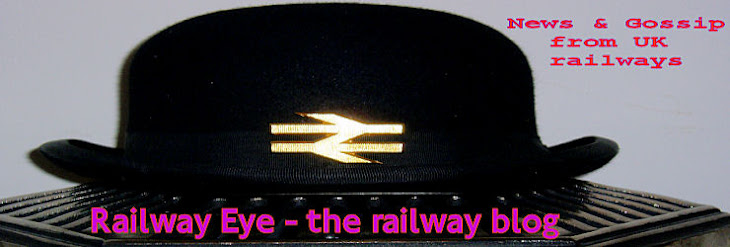Monday's guest post from Ben Smith on how the railways might use social media attracted considerable interest amongst readers.
Brendan Nelson, a consultant who works for Tobias & Tobias, helped FCC to deliver the Twitter service that Ben mentioned in his post.
Brendan has asked if he might share his view with Eye readers.
Yes he may and here it is:
A number of rail companies have already responded to Ben Smith's guest column on June 15th, which argued that rail companies are failing to exploit social media.
However, as one of those behind the First Capital Connect Twitter service Ben singled out as "getting it wrong", I thought I'd chip in with my own two cents.
Twitter users subscribe to, or "follow", any number of other Twitter accounts. The more accounts a user "follows", the more information they receive - and the more difficult it becomes to sift through the incoming stream of information.This information overload poses a challenge to train operators looking to use Twitter. They generate a lot of data, most of which the average customer will find irrelevant. For example, customers travelling between Brighton and London Bridge at 6pm aren't interested in incidents at Stevenage close to midnight.
So if all this data is simply piped through a Twitter feed, its "followers" will have to deal with a high noise-to-signal ratio: the vast majority of messages will be of no relevance. This issue of relevance was the problem we set out to solve with FCC's Twitter service.
Our users state their journey preferences so that the system can send alerts when - and only when - relevant incidents occur. This is the fundamental difference between @FirstCC and @uktrains, which adopts more of a broadcast model. Followers of @uktr_firstcc might receive at least nine irrelevant messages for each relevant one.
Another strength of the "targeted" model is that our system uses Twitter's "direct message" feature, which means users receive emails and potentially SMS messages when alerts are sent. All this is free of charge.
Ben says that we miss the "social" aspect of Twitter. But I feel the social aspect is intrinsic to Twitter itself and users will forward on information that they feel is important - even if it came to them as an official, targeted communication. And a quick look at conversations on Twitter confirms that passengers don't need encouragement to talk about train services.
So while @uktrains has its strengths, I believe that - by solving the problem of relevance - our model does as well.
Just as bulletin boards didn't make email obsolete, the public conversations taking place on Twitter won't make official, targeted communications obsolete either.





